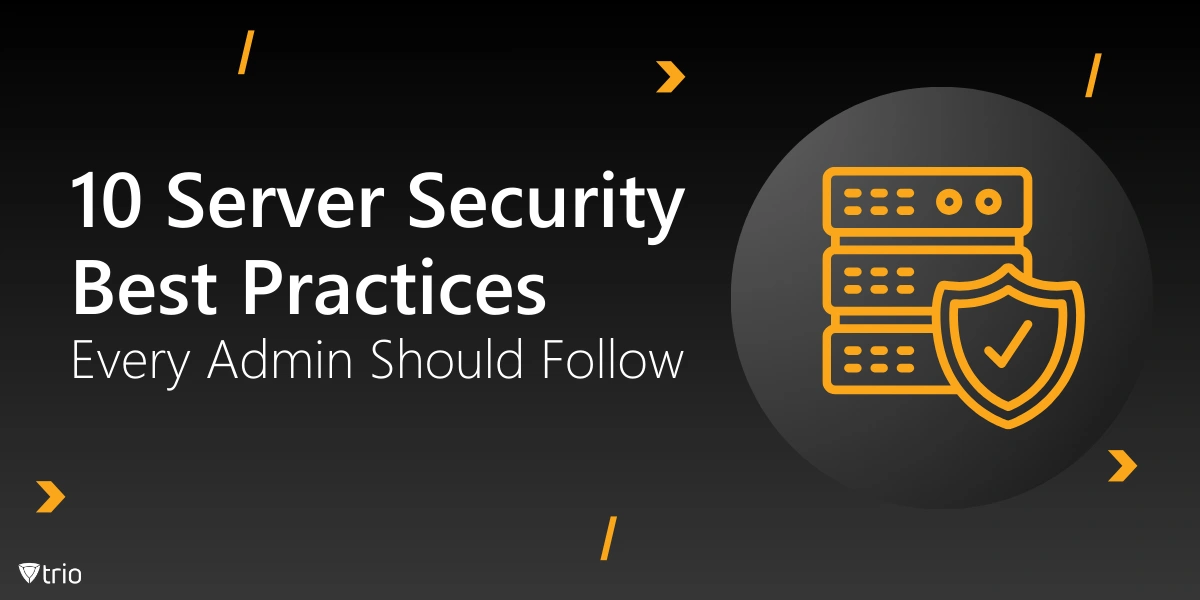Server security best practices are not optional; they are essential. Servers are the lifeblood of organizations, managing data, operations, and connectivity. In a world where cyber threats grow more sophisticated by the hour, ensuring robust server management is critical to staying operational and secure. Neglecting this puts everything at risk—from sensitive customer data to your company’s reputation. The stability of an entire organization can hinge on the strength of its server defenses, making comprehensive security measures a top priority.
Every server is a target. Hackers love exploiting vulnerabilities, and when your defenses are down, they’ll take full advantage. The importance of server security extends beyond protecting your data; it’s about maintaining trust with clients and stakeholders. A single breach can lead to disastrous consequences, from financial losses to irreparable reputation damage. This article outlines clear, actionable steps to fortify your servers without bogging you down with technical jargon. Every recommendation is crafted to help you stay ahead of threats while streamlining server management practices.
Let’s cut to the chase: this guide is your roadmap to secure, efficient server management. From patch management to encryption, we’ve compiled strategies that are effective, easy to implement, and proven to work. If you’re serious about keeping your infrastructure safe, you’re in the right place. Dive in to explore essential practices that not only protect your servers but also enhance their performance. Your journey to smarter, safer server management starts here.
1. Regularly Update and Patch Server Software
Imagine leaving your doors unlocked in a crime-ridden neighborhood. That’s what ignoring software updates does for your servers. Patches fix vulnerabilities that hackers actively seek out. Patch management is non-negotiable—it’s the first line of defense against intrusion. Regular updates ensure that the latest security flaws are addressed, keeping your systems resilient against emerging threats. Failure to patch promptly can lead to exploitative attacks that compromise sensitive information and disrupt operations.
Relying on manual updates is risky. Automating patch management ensures no critical update slips through the cracks. Tools like WSUS or third-party solutions can schedule patches, monitor compliance, and keep your systems fortified without the hassle of manual intervention. Automation minimizes human error and saves time, allowing IT teams to focus on more strategic tasks. Investing in automated patching tools is a proactive step toward building a more secure and efficient server environment.
2. Implement Strong Authentication Mechanisms
Single passwords are the digital equivalent of a rusty padlock. Multi-factor authentication (MFA) adds a critical layer of defense. Even if one credential is compromised, an additional verification step ensures unauthorized users hit a wall. By requiring multiple forms of identification, MFA significantly reduces the likelihood of unauthorized access, enhancing overall system security.
Strong passwords aren’t a luxury; they’re a necessity. Implement policies requiring alphanumeric combinations, special characters, and frequent updates. And please, no more “123456” or “password1.” Your servers deserve better. Encourage employees to use password managers for generating and storing complex passwords securely. Establishing clear password policies and regular training helps foster a culture of cybersecurity awareness within your organization.
3. Configure Firewalls and Network Security
Firewalls act as gatekeepers, scrutinizing incoming and outgoing traffic. Proper configuration blocks suspicious activity while allowing legitimate communication. Think of it as a bouncer keeping the troublemakers out of your VIP server lounge. Ensuring regular updates and rule assessments for your firewall strengthens its capability to detect and neutralize threats effectively.
Network segmentation best practices reduce the blast radius of a breach. By isolating critical systems, you limit hackers’ access even if they infiltrate part of the network. It’s like having separate safes for your most valuable assets. Using VLANs or physical segmentation adds layers of protection, making it harder for attackers to navigate laterally through your network. A well-segmented network is a hallmark of advanced server security.

4. Secure Remote Access
Remote work is the norm, but it’s also a hacker’s playground. Virtual Private Networks (VPNs) create secure tunnels for remote access, keeping sensitive data away from prying eyes. VPNs encrypt data transmissions, ensuring confidentiality even over public networks. Combining VPNs with additional layers like MFA further enhances remote access security, reducing potential vulnerabilities.
Don’t hand out the keys to everyone. Restricting remote access based on roles ensures that only those who need it can connect. Assign permissions thoughtfully to minimize exposure and reduce potential entry points for attacks. Less access, less risk, and a much stronger barrier to unauthorized users. Periodic reviews of access levels help maintain control and adjust to evolving organizational needs.
5. Regularly Backup Server Data
Backups are your safety net. Schedule regular backups—full for critical data, incremental for daily changes. For example, a healthcare organization could restore patient records quickly after a ransomware attack. Similarly, an e-commerce business with nightly backups can avoid prolonged downtime during server failures. When disaster strikes, recovery becomes a matter of hours, not days. Having multiple backup copies stored across diverse locations ensures robust data resilience.
Backups themselves can be targets. Encrypt stored data using robust algorithms and secure it in off-site or cloud storage with restricted access controls. Consider using multi-region storage for added resilience. Losing your backup to an attack is the ultimate irony, undermining recovery efforts—don’t let it happen by staying proactive. Regular testing of backups ensures their integrity and reliability when needed most.
6. Monitor and Log Server Activity
Real-time monitoring tools provide critical insights into server activity. These tools feature alert systems that notify administrators of unusual patterns, dashboards for visualizing data trends, and integrations with other security platforms. Spot anomalies before they escalate into full-blown breaches, using these advanced functionalities to stay ahead of potential threats. Proactive monitoring helps mitigate risks and ensures swift responses to emerging issues.
Log management best practices involve detailed record-keeping. Comprehensive logs serve as a digital footprint, helping trace incidents, identify vulnerabilities, and bolster future defenses. Regularly archiving logs ensures critical data remains accessible for audits and reviews. Don’t let valuable data vanish into the ether—keep it organized and ready for use. Leveraging centralized log management tools simplifies the process and enhances analysis capabilities.
7. Limit User Access and Privileges
Adopt the principle of least privilege. Grant users access only to what’s essential for their role to perform their duties effectively. Regularly evaluate these permissions to ensure they align with job responsibilities. Every unnecessary privilege is an open door for exploitation, making it crucial to limit access as much as possible.
Conduct regular audits to ensure access levels remain appropriate. Employees change roles, leave organizations, or no longer need access—adjust permissions accordingly to reduce exposure.
8. Protect Against Malware and Intrusions
Types of server security include robust anti-malware defenses. These tools detect, quarantine, and eliminate threats before they cause havoc, safeguarding critical systems. Advanced features like heuristic analysis and real-time scanning offer proactive protection against evolving threats. Without these defenses, your server becomes an easy target for malicious software and exploits.
Intrusion Detection and Prevention Systems (IDPS) proactively identify and block malicious activities. Think of it as an alarm system that not only alerts you but also locks the doors.
9. Encrypt Sensitive Data
Data at rest and in transit must be encrypted. Web server security best practices involve using SSL/TLS protocols to safeguard transmissions and AES algorithms for storage. These measures ensure sensitive information remains secure, even during potential breaches. By encrypting data effectively, organizations add a robust layer of protection against unauthorized access.
Encryption is only as good as your key management. Secure keys in hardware security modules (HSMs) to prevent unauthorized access, and rotate them periodically for added safety. Regularly audit your key management processes to identify gaps. Effective key security ensures encrypted data remains protected against unauthorized users and potential breaches.

10. Conduct Regular Security Audits and Assessments
Scheduled security audits reveal gaps and ensure compliance with policies. These audits provide a structured approach to identify weaknesses and address them systematically. Regular evaluations are critical for proactive defense, enabling organizations to adapt their security measures to evolving threats and ensuring that policies remain effective against potential vulnerabilities.
Vulnerability assessments and penetration testing simulate real-world attacks, helping identify weak spots in your server infrastructure. These tests mimic potential threat scenarios, revealing overlooked vulnerabilities that automated tools may miss. Strengthen those areas before attackers exploit them, ensuring your defenses are not only robust but also tailored to counter real-world threats.
Trio: Secure Your Servers with Confidence
It’s worth mentioning that our solution, Trio, streamlines server security management. With features that complement patch management and monitoring, Trio is designed for organizations prioritizing robust security.
Want hands-on experience? Explore the free demo and discover how Trio simplifies security while enhancing efficiency. It’s a comprehensive tool designed to address complex server management challenges. It’s not about adding tools; it’s about smarter security that aligns with your organization’s needs and ensures robust protection against evolving threats.
See Trio in Action: Get Your Free Trial Now!
Conclusion: Security is a Journey
Cloud server management isn’t static—it’s a dynamic process requiring ongoing vigilance and adaptability. By implementing these best practices, you’re not just protecting data; you’re ensuring the trust and stability of your operations. This commitment to proactive measures fosters a resilient infrastructure capable of withstanding evolving threats and maintaining seamless functionality.
Keep refining your security posture with regular evaluations and updates. In a world full of cyber threats, proactive management is your best defense against an ever-changing landscape. By staying vigilant, organizations can adapt quickly, mitigate risks, and ensure their systems remain resilient in the face of emerging challenges.




